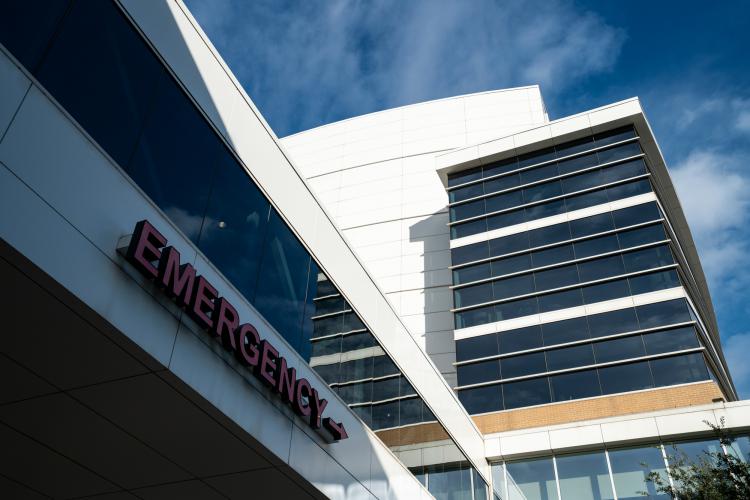
JPS Health Network is ready to serve COVID-19 patients during this unusual time in history. But it’s also always ready and able to serve people who count on it for other types of emergency care, including potential heart attack and stroke patients.
“We’ve had a dramatic drop in the number of patients we’re seeing with chest pain and stroke symptoms,” said RN Krystle Feinauer, Chest Pain Coordinator at JPS. “It’s not that fewer people are having chest pain or stroke symptoms. It’s that they seem to be reluctant to come to the hospital to get the care they need. Either they think we’re too busy to help them because of the pandemic or that they’re going to get COVID-19 if they come here.”
The phenomenon of people refusing to get help for serious health concerns during the current pandemic isn’t unique to JPS. It’s happening at hospitals across Tarrant County, Texas and the United States as a whole.
If people have chest pain or symptoms of a stroke, they need to come into the hospital immediately. We have the people and resources we need to take care of them ready and waiting, just like we always do.
MedStar Ambulance in Tarrant County reports a dramatic drop in the number of potential heart attacks it has been called up to handle. The number of people who summoned MedStar for chest pain concerns dropped 42 percent in April 2020 compared to April 2019, according to Matt Zavadsky, Chief Strategic Integration Officer for the ambulance service. Emergency calls from concerning potential stroke symptoms are down 36 percent over the same period of time.
While the number of chest pain cases are down, the percentage of people who arrive at the hospital after suffering cardiac arrest is actually up, Feinauer said, indicating people are delaying seeking help until a serious situation gets out of control.
“These are situations that are very time sensitive,” Feinauer said. “If people have chest pain or symptoms of a stroke, they need to come into the hospital immediately. The longer they delay, the less things we can do to help them. We want them to know that we have the people and resources we need to take care of them ready and waiting, just like we always do.”
Feinauer said JPS team members are fully supplied with personal protective gear and are employing practices designed to protect patients – and themselves from COVID-19 exposure.
RN Lauri Speirs, Stroke Program Clinical Nurse Specialist, said since the beginning of the COVID-19 pandemic has had a number of patients who waited for days after experiencing stroke symptoms to come to the hospital, including some who have suffered previous strokes who knew they needed to be vigilant.
“Ideally, to have the best chance of success, we need to see people within three hours of the time they start to experience symptoms,” Speirs said. “There is a lot we can do in that window. Once you get past that point, there is a much greater chance that they’re going to have permanent damage. It doesn’t have to be that way. But they need to get to the hospital as soon as possible.”
What to look out for:
- Symptoms of a heart attack include some or all of the following: Chest pain, lightheadedness, nausea, jaw, neck or back pain, discomfort or pain in your left arm or shoulder, and shortness of breath.
- Symptoms of a stroke include some or all of the following: Sudden numbness or weakness in the face, arm, or leg, or on one side of the body, sudden confusion, trouble speaking, or difficulty understanding speech, trouble seeing in one or both eyes, sudden trouble walking, dizziness, loss of balance, or lack of coordination.
If you experience these symptoms, call 9-1-1 immediately to go to the hospital to be checked out and treated if necessary.
“If they’re having chest pain or stroke symptoms, people shouldn’t be afraid to call 9-1-1,” Speirs said. “I know some people are scared by the fact the doctors and nurses at the hospital who are taking care of them are wearing masks. But they’re doing that to keep them safe. I know they’re upset because they can’t have visitors right now. But we’ll facilitate them being able to talk to their family over the phone. They just have to get here. I wish we could take care of them while they stayed home. But that’s just not the way it works. Come to the hospital. We’re going to take good care of you.”
